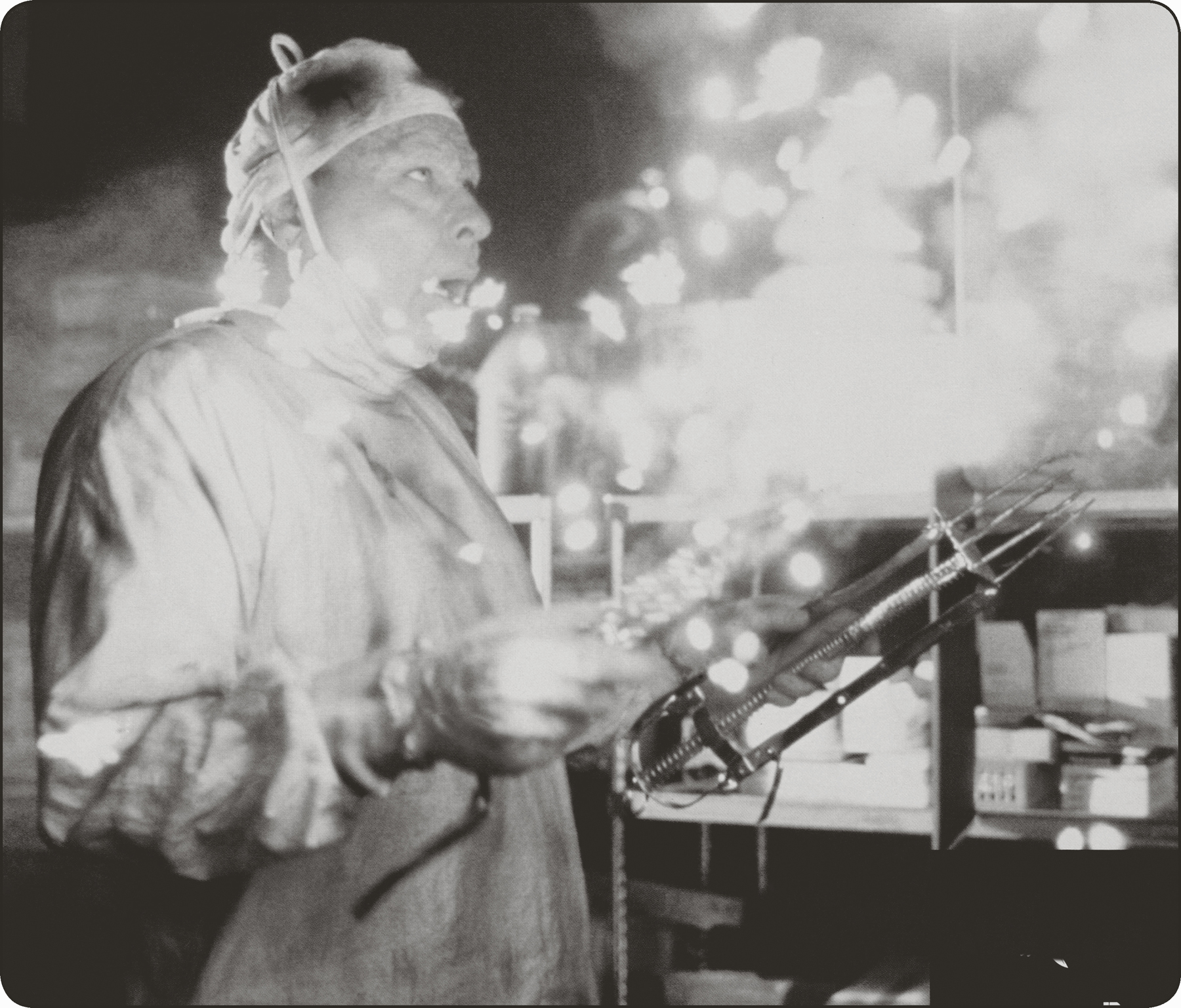CRITIC ESSAY
DR. GIGGLES 1992
 17%
17%
Directed by Manny Coto
Written by Manny Coto and Graeme Whifler
Starring Larry Drake, Holly Marie Combs, Cliff De Young, Glenn Quinn
Manny Coto’s Dr. Giggles earned cult status in my childhood home. One night, my then stepfather had rented it from the video store and descended into the basement to watch solo, while the rest of us slept. But somewhere around midnight, my mother, sister, and I were awoken by the sound of thundering footsteps racing up the stairs. My big, burly stepdad—with a gun cupboard stickered with NRA logos—was so frightened by this movie that he had run up the stairs, afraid of the dark.
It was doubly wonderful when I then watched Dr. Giggles and fell in love with it, not necessarily because of its scares but because this slasher comedy was so unexpectedly funny, touching, and evocative of some of the most beautiful images of classic horror, particularly James Whale’s Frankenstein (1931). A movie titled Dr. Giggles did not demand such exquisite cinematography and design nor Larry Drake’s multifaceted performance as the eponymous medico, and yet, there it was.
Dr. Giggles tells the story of a boy with an eerie giggle. It’s the 1950s, and his doctor father loses his mind when his wife grows ill. The father murders some townspeople, searching for a new heart for her, and the townspeople come for him, stoning him to death and tearing his home apart. But nobody could find his young son, whom they suspect snuck out through a secret passageway. Fast forward to the present, where a crazed man with an eerie giggle escapes from a mental hospital after performing “surgery” on the staff. Dr. Giggles (Drake) returns to his childhood home to avenge his father by punishing the townspeople with cheeky one-liners and horrifying medical tools that look like they were left over from David Cronenberg’s Dead Ringers (1988). When Dr. Giggles finds out a young woman named Jennifer (Holly Marie Combs) has a heart condition, he focuses his attention on her, on the hunt to capture her and give her the heart transplant of her nightmares.

Reviewers at the time totally misunderstood Coto’s intentions. American horror was just coming out of the slasher boom of the 1980s, and critics mistook this outrageous yet strangely measured serving of medical gore as just the last gasp of a dying genre rather than the rebirth of a new one: the self-aware, meta horror-comedy. Keep in mind that Scream was still four years away, and Wes Craven’s toe-dip into the well with The People Under the Stairs (1991) was already received poorly by critics. Coto was one of a handful of directors ahead of the pack.
The Los Angeles Times critic Kevin Thomas bought what Coto was selling, calling it a “fast and frequently hilarious collision of gore and gags, and a tour de force of smart, sophisticated exploitation filmmaking.” Coto was clearly working within a cinematic tradition, his adoration of Whale apparent, especially in one scene where Dr. Giggles trudges through the forest in silhouette, backlit by a mysterious light, fog hanging low around him as he carries Jennifer’s limp body in his outstretched arms. He is the monster. If one looks closely at every scene, you’ll find production design mimicking those of the classics, too. But one scene in particular requires very little attention to realize it’s expertly aping one of the most experimental moments in cinematic history: the mirror sequence from Orson Welles’s The Lady from Shanghai.
Editing, cinematography, direction, and action in this particular sequence are stunning. Jennifer has wandered into a funhouse at a carnival. She’s just caught her boyfriend making out with the school tramp and is trying to get away from him. Her boyfriend and the tramp follow Jennifer in, and unbeknownst to any of them, Dr. Giggles is not far behind. What follows is an atmospherically dazzling and dizzying showcase of Grand Guignol horror, which is punctuated by a comically bizarre murder that still somehow works inside the high art: the tramp is suffocated by a gigantic Band-Aid that Dr. Giggles just happened to have in his medical bag.
As the bad doctor, Drake’s emotions oscillate and overlap: pain, fear, satisfaction, and insanity apparent in his voice, sometimes simultaneously. I never knew a giggle could make me cringe, then laugh, then tear up in the span of a minute. Add to this a sumptuously melodramatic score from Brian May, which borrows from all those torrid monster classics, and this film is irresistible.
To explain the plot of Dr. Giggles and see people’s eyes glaze over when I tell them this was one of the most artful horror films of the nineties is a regular occurrence for me. But Dr. Giggles deserves revisiting. What’s most interesting is that although Coto was never properly applauded in film, his talents found a home in television with The Outer Limits, Strange World, 24, and Dexter. In 2018, he joined the team behind American Horror Story, which wasn’t surprising; it’s a show that traffics in the very brand of horror that Coto pioneered all those years ago.
Rotten Tomatoes’ Critics Consensus Larry Drake’s deranged performance as the titular doctor is just about all that distinguishes Dr. Giggles from its slasher brethren.